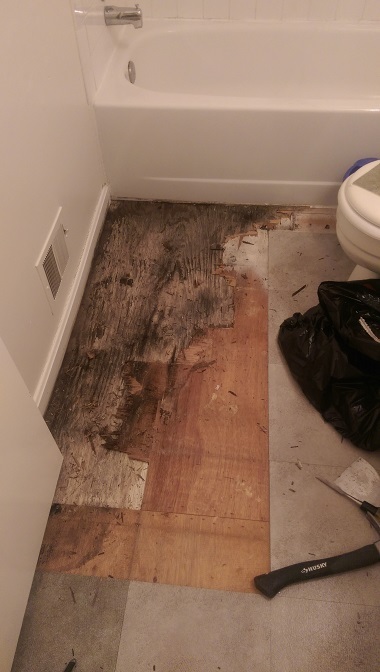How to Help Prevent Water Damage in Your Bathroom
Click HereThey are making several great points on Looking for Signs of Water Damage in the Bathroom overall in the content directly below.

The bathroom is very at risk for moist buildup and prospective water damages because of the regular use water in it. This article uses simple evaluation techniques to aid finding water damage risks.
The constant use of water in the restroom makes it exceptionally vulnerable for moist build-up and also potential water damages. By evaluating it routinely, you can decrease water relevant problems.
The adhering to set of evaluations is simple to execute and also should be done when in every 3 months in order to maintain your bathroom in good shape as well as to prevent prospective water problems brought on by the bathtub, the shower, pipe joints as well as plumbing, sinks, cupboards, and also the commode
Do not neglect carrying out these assessments and also be detailed while doing them. Keep in mind that these easy examinations can save you a lot of cash by providing early signs for water damage
Tub and also Shower
The shower and tub need special interest and upkeep. Inspect the tiles and also replace if cracked. See to it that there is no missing grout in between the tiles. Evaluate as well as replace split caulking at joints where the walls fulfill the floor or the bath tub. Blocked drains as well as pipes troubles will protect against the tub from drying out as well as might suggest serious issues beneath the bath tub. Speak with a specialist instantly to stop structural damages. Take note of discolorations or soft locations around the bath tub walls as they might show an internal leakage.
Plumbing
Signs for water damages are hard to discover given that many pipelines are mounted inside the wall surfaces.
Pay unique interest to flooring and wall surfaces wetness as well as stains as they might suggest an unnoticeable plumbing problem. Check dampness levels in adjoining areas also.
Sinks as well as Cabinets
Sinks and closets are subjected to moisture and moisture everyday and are usually ignored. Check routinely under the sink and also on the counter top over it. Repair any kind of drip in the trap as it might suggest drainpipe issues. Look around the sink, sluggish draining pipelines may suggest an obstructed drain. Replace sink seals if they are fractured or loose.
The Bathroom
The commode is a vulnerable water joint. Examine the water lines and search for leaks around the bathroom seat, in the hose, as well as under the water container. If you discover any kind of signs of wetness on the floor around the bathroom, look for leaks in the toilet edge and also tank seals.
Understand that hanging commode dish deodorants raises the possibilities for clogs.
How to Prevent Water Damage in Your Bathroom?
Water damage repair is an expensive, meticulous, and lengthy process. Unfortunately, bathrooms are the most susceptible rooms to water damage due to toilets, showers, and sinks. Pipes and fixtures wear out over time and are not immune to damage. But all is not lost, as there are ways to prevent water damage from occurring in your bathroom.
Check Your Plumbing
Nothing lasts forever, especially pipes, which can rust and begin leaking over time. You should periodically conduct pipe inspections and pay attention for any musty smells or water stains that may indicate you need water damage repair. Here are some things to check:
Frequently test valves for your toilet, shower, and sink to ensure they are properly working. Check faucet supply lines hidden under vanities and replace when needed. Replace cracked or deteriorating caulking along sinks, tubs, and showers. If you notice a clog in your sink, call in a professional. Since you can’t check the pipes in the wall, keep an eye out for stains, drywall bubbling, musty smells, and excess moisture; if the bathroom is on a second level, check the ceiling of the room directly below for these signs. Don’t Overwork Your Toilet
One of the most common reasons bathrooms need water damage repair is due to overflowing toilets. Save yourself the hassle of cleanup by being mindful and not pushing your toilet to extreme limits. If you have young children, it is especially important to keep an eye on them when they are in the bathroom and to teach them how to avoid clogging the toilet. Here are some more tips to help prevent your toilet from overflowing:
If you have a septic tank, only use septic-safe toilet paper Do not flush anything down the toilet besides toilet paper; items like diapers and sanitary napkins will clog the piping Pay attention to your toilet’s water level: If it’s low, it could mean it is partially clogged or that there is a crack in the toilet bowl Maintain Your Shower/Tub
Replace showers or tubs with cracks or other damage; even hairline cracks can allow water to seep in and cause damage. Grout and caulk help prevent water from seeping into walls and floors, so repair them if they are chipped, cracked, or deteriorating. Replace torn shower curtains or shower doors with seals that no longer work. Dry the floor and drain water from the tub immediately after use to prevent damage from sitting water. https://www.alure.com/home-improvements-blog/resources/how-to-prevent-water-damage-in-your-bathroom

As a serious person who reads on How to Fix a Water Damage Bathroom, I figured sharing that chunk was a great idea. If you enjoyed our page kindly don't forget to share it. Many thanks for taking the time to read it.
Go Deal